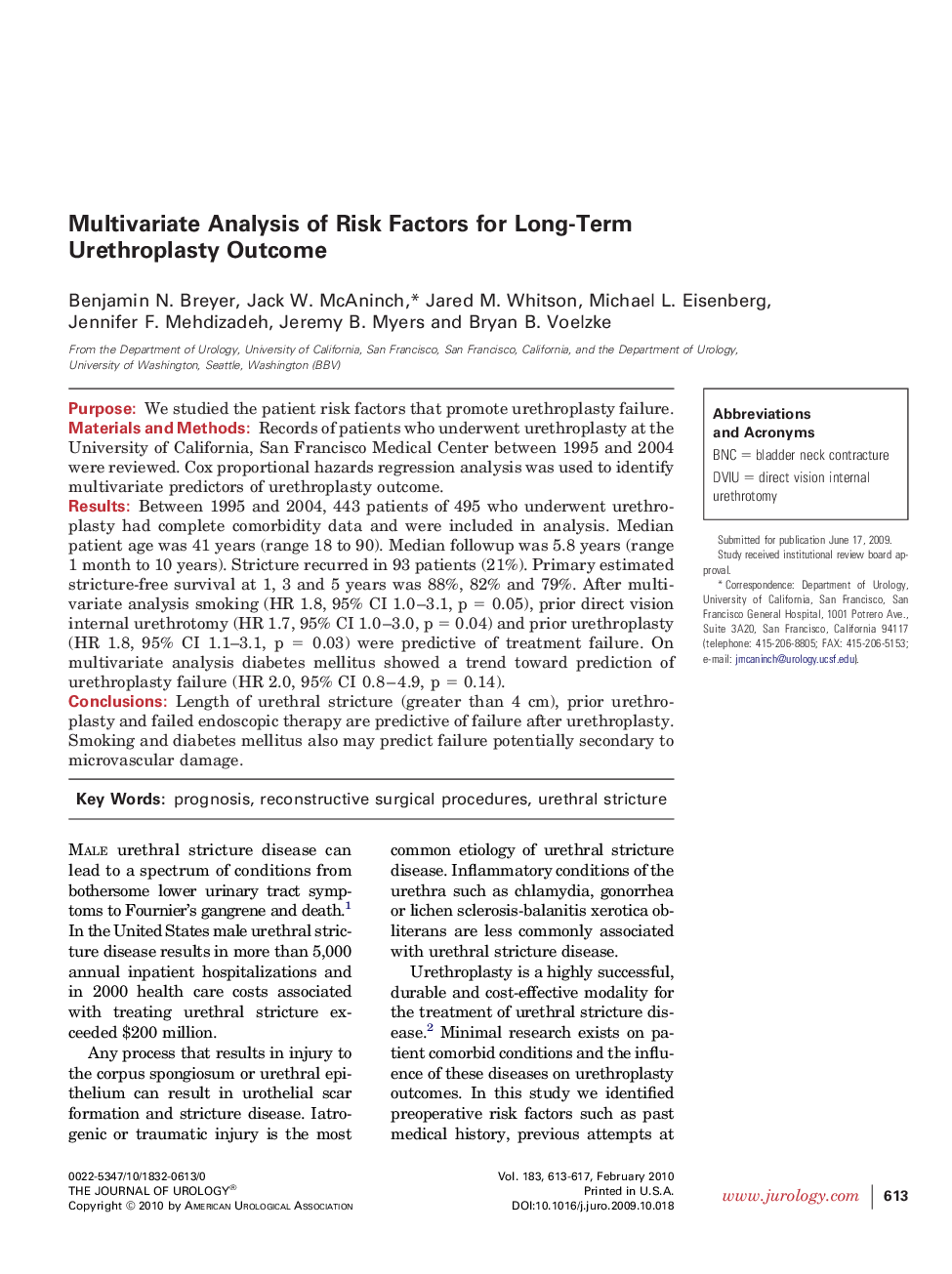| Article ID | Journal | Published Year | Pages | File Type |
|---|---|---|---|---|
| 3867313 | The Journal of Urology | 2010 | 5 Pages |
PurposeWe studied the patient risk factors that promote urethroplasty failure.Materials and MethodsRecords of patients who underwent urethroplasty at the University of California, San Francisco Medical Center between 1995 and 2004 were reviewed. Cox proportional hazards regression analysis was used to identify multivariate predictors of urethroplasty outcome.ResultsBetween 1995 and 2004, 443 patients of 495 who underwent urethroplasty had complete comorbidity data and were included in analysis. Median patient age was 41 years (range 18 to 90). Median followup was 5.8 years (range 1 month to 10 years). Stricture recurred in 93 patients (21%). Primary estimated stricture-free survival at 1, 3 and 5 years was 88%, 82% and 79%. After multivariate analysis smoking (HR 1.8, 95% CI 1.0–3.1, p = 0.05), prior direct vision internal urethrotomy (HR 1.7, 95% CI 1.0–3.0, p = 0.04) and prior urethroplasty (HR 1.8, 95% CI 1.1–3.1, p = 0.03) were predictive of treatment failure. On multivariate analysis diabetes mellitus showed a trend toward prediction of urethroplasty failure (HR 2.0, 95% CI 0.8–4.9, p = 0.14).ConclusionsLength of urethral stricture (greater than 4 cm), prior urethroplasty and failed endoscopic therapy are predictive of failure after urethroplasty. Smoking and diabetes mellitus also may predict failure potentially secondary to microvascular damage.
